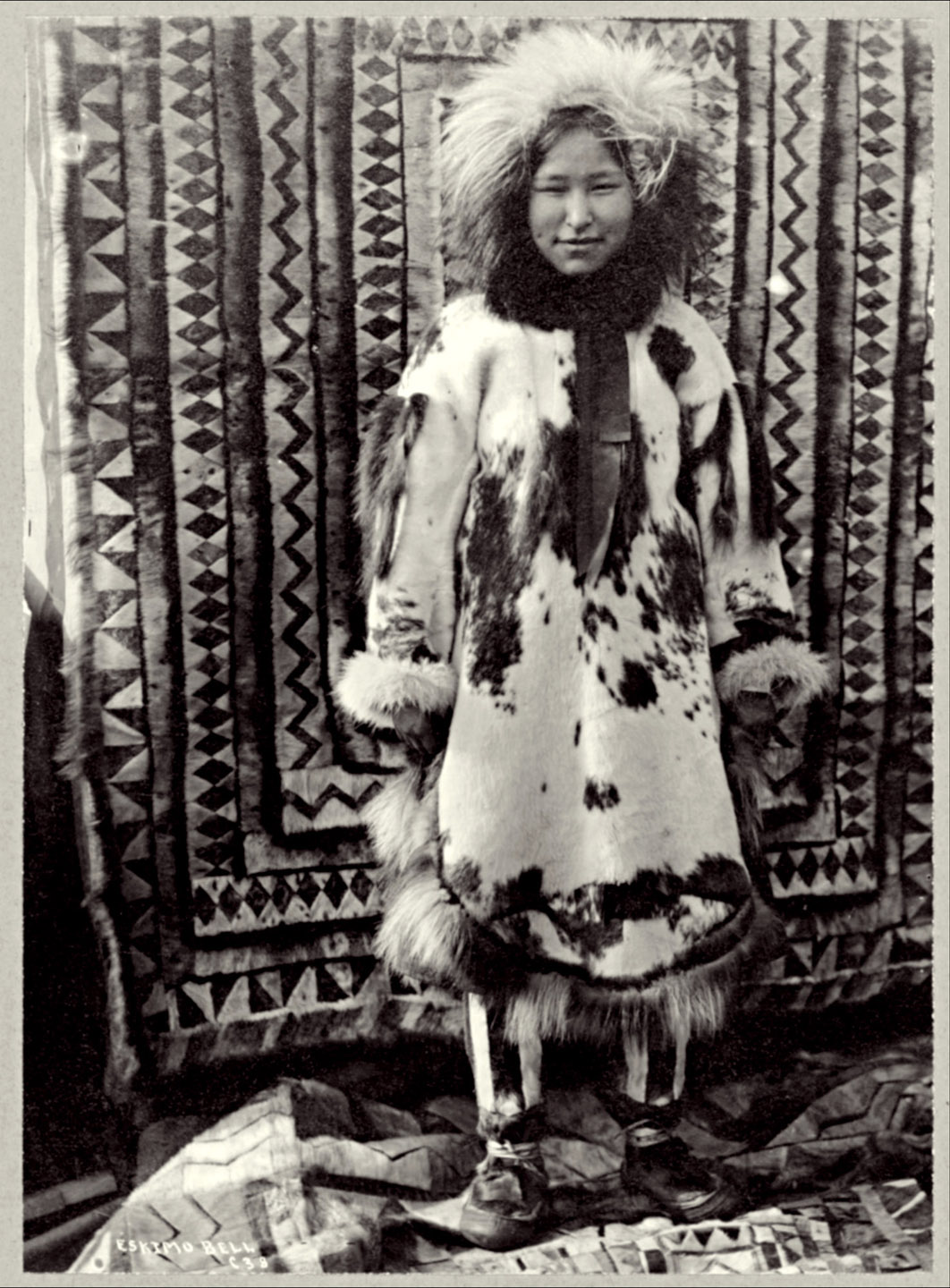Primitive Eskimo Skin Rugs
Out of Africa into a haze of white and ice
Humans aren't born with thick furry waterproof coats like polar bears. Before the age of petroleum and faux plastic fur - the choice was simple, kill the bear and wear it, graphically illustrated in Star Wars - The Empire Strikes Back. On planet Hoth, Luke Skywalker is struck from his hairy grey Tauntaun snow lizard by a Wampa Ice Creature. Han Solo comes to rescue Luke. Solo slices his expired Tauntaun from head to toe with Luke's saber, removes the beasts insides and stuffs Luke into the stinking carcass. Science fiction yet the icy vision is potent.
Out of Africa and into a haze of white and ice borrowing the hides of beasts along the way. Wherever and whenever it was colder than Africa, during and after the last ice age, man had to come up with solutions to remain permanently warm. The Yakut in Eastern Siberia used animal skins yet a reindeer is hardly going to provide suitable wool for weaving unlike a yak or fat tailed sheep. When the Yakut moved North they left behind the opportunity to exploit the abundance that primitive pastoralism could provide. Scythian primitive pastoralists shore their herd for wool and weaving. Even further north the possibility of herding and shearing polar bears is nil let alone weaving their shaggy fur into a whiter than white woolen fantasy - hunt them and wear their hides - yes that can be done.
Supremely warm and clad in seal and bearskin from head to toe, a smiling Eskimo girl stands proudly on and in front of her primitive pieced skin rugs of many borders.
Cutting out the white fur patterns, stitching them in sections to the dark fur strips then sewing all the strips together must have taken ages in the whiteout of an Alaskan winter. The technique used can easily be seen the rug on the floor shows both front and back. Some of the parts would appear as if in relief against light or dark colours. This technique is not seen in pieced skin rugs from Eastern Siberia and Central Asia. In Alaska different techniques have independently developed. In Central Asia pieced skin rugs are more simplistic in design. Yakut pieced skin rugs are mostly deer or reindeer hides stitched together. The Eskimo pieced skin rug takes on the form of a multi-bordered primitive rug the outer border resembles Uzbek Julkhyrs from northern Afghanistan. There is no source of information on the history of these rugs, perhaps the patterning is a natural response to viewing a woven carpet from far away. The image was shot in the 1st quarter of the 20th Century. Pieced skin reindeer hide rugs were also made by Eskimo’s and resemble those of the Yakut.
Woven rugs used as floor coverings, is a direction which nomadic primitive pastoralists took when the climate and animal herds were in harmony with the need to weave. The creation of animal skin trappings, floor rugs, bedding, shelters, transport and clothing did not die off because in ideal climates weavers began to weave.
The importance of wool as a resource for weavers is highlighted by the plight of Turkmen weavers in the North of Afghanistan when forced to buy wool from the Kirghiz of the Afghan Pamirs in the early 1970's. The cost of transportation is thrown into the spotlight here.
"felt, horse covers, furs, sheepskins, and wool are also taken to markets. Again the amount of these latter items is small because of the extremely difficult and costly transportation. The demand for wool, however, is very much on the rise because of the increasing international market for Afghan carpets. The need for high quality Kirghiz wool was realised particularly after the 1971-72 drought in northern Afghanistan (one of the main areas of carpet-weaving industry), which devastated the animal population of the area. As a result, during the past few years Turkmen carpet weavers have been coming to the Pamirs solely to buy wool." 1
Weaving exists where there is an abundance of woolly animals to round up and shear, as a requirement to keep warm or provide practical floor coverings.
Domestic and wild animal skin products are created alongside woven items where both weaving and treating hides is possible.
Independently, animal skin items are made where the opportunity to access an abundant source of shorn wool is limited by climate or distance.
| Bibliography 1. Shaharani M. Nazif The Kirghiz and Wakhi of Afghanistan Adaptation to Closed Frontiers and War University of Washington Press 2002 201
|
Photograph titled Eskimo Bell - Primitive Eskimo Skin Rugs probably Cape Prince of Wales - Nome Alaska
Title: Eskimo girl wearing clothes of all fur
Other Title: Eskimo bell [i.e. belle] ca 1900-1930
Reproduction Number: LC-DIG-ppmsc-02273
Call Number: LOT 11453-2, no. 1
Frank and Frances Carpenter collection
Library of Congress Prints and Photographs
Division Washington, D.C. 20540 USA
